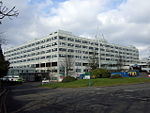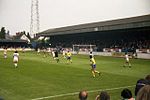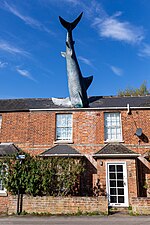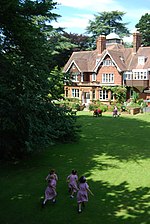Weatherall Institute of Molecular Medicine

The MRC Weatherall Institute of Molecular Medicine at the University of Oxford is a research institute located at the John Radcliffe Hospital in Oxford. Founded in 1989 by Sir David Weatherall, the institute focuses on furthering our understanding of clinical medicine at a molecular level. It was one of the first institutes of its kind in the world to be dedicated to research in this area.The MRC WIMM is part of the Medical Sciences Division at the University of Oxford. It hosts over 500 staff and students from seven different departments working on five key areas of research: immunology and infection, haematology, rare diseases, cancer biology, stem cells and developmental biology. The institute houses the MRC Human Immunology Unit, MRC Molecular Haematology Unit and MRC WIMM Centre for Computational Biology. A third of the researchers are clinically qualified and have joint posts with the departments at the Oxford University Hospitals NHS Foundation Trust.
Excerpt from the Wikipedia article Weatherall Institute of Molecular Medicine (License: CC BY-SA 3.0, Authors, Images).Weatherall Institute of Molecular Medicine
Oxford Headington
Geographical coordinates (GPS) Address External links Nearby Places Show on map
Geographical coordinates (GPS)
| Latitude | Longitude |
|---|---|
| N 51.763568262029 ° | E -1.2171656366918 ° |
Address
Weatherall Institute of Molecular Medicine
OX3 9DX Oxford, Headington
England, United Kingdom
Open on Google Maps









